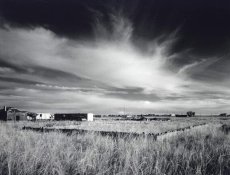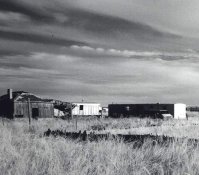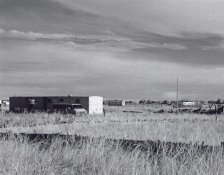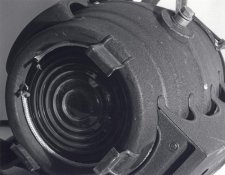Paul Sorensen
Subscriber
I am wondering if I have the wrong film/developer/agitation combo here or is this what others experience with Classic Pan 400 film. I developed 4X5 sheets in a Joboi, using a manual contstant agitation floating in a water bath. The density was a bit high, I think I need to reduce my times a little, but I love the contrast and thought that the image came out beautifully, except for way more grain than I expect from 4X5 film.
When I printed this to 11X14, it looked more grainy than what I am used to with TX and 645 fomat negs. That is a ton of grain for 4X5. Is this a bad developer for the film or for constant agitation? Do you also wonder if maybe I was too agressive with the speed at which I spun the drum? Any other ideas?
I am attaching a couple of scans. One is most of the image and the other a crop of part of the image to show grain. I have only done unsharp mask, 100% at 1 pixel, to the scan, not other manipulation. Excuse the crap from the scanner bed!
Thanks!
Paul.
When I printed this to 11X14, it looked more grainy than what I am used to with TX and 645 fomat negs. That is a ton of grain for 4X5. Is this a bad developer for the film or for constant agitation? Do you also wonder if maybe I was too agressive with the speed at which I spun the drum? Any other ideas?
I am attaching a couple of scans. One is most of the image and the other a crop of part of the image to show grain. I have only done unsharp mask, 100% at 1 pixel, to the scan, not other manipulation. Excuse the crap from the scanner bed!
Thanks!
Paul.










 . I agree, that grain is way more than I would have expected. I've not tried Classic 400 but, do have some little bit of experience doing TXP in HC-110 with continuous rotation (Jobo tank, lego lift). I use dilution D and have never seen grain like this - not even with 35mm at 8x10.
. I agree, that grain is way more than I would have expected. I've not tried Classic 400 but, do have some little bit of experience doing TXP in HC-110 with continuous rotation (Jobo tank, lego lift). I use dilution D and have never seen grain like this - not even with 35mm at 8x10.



